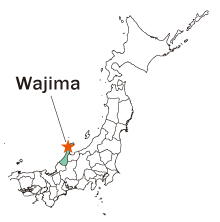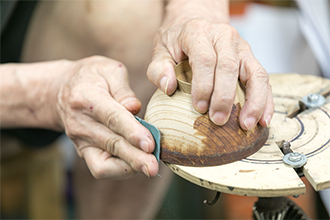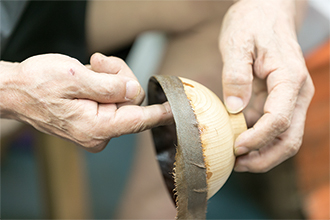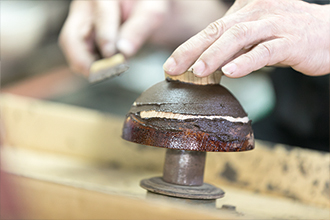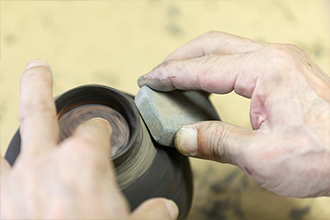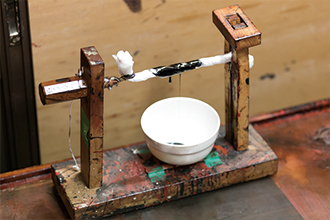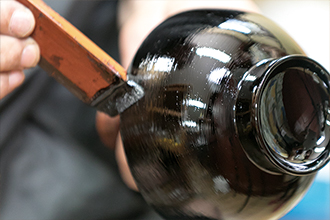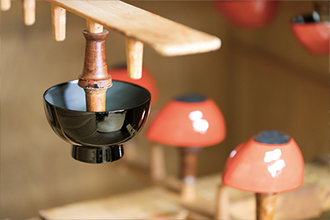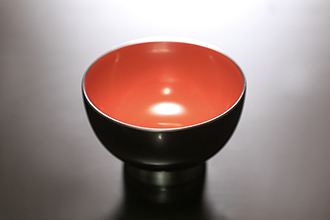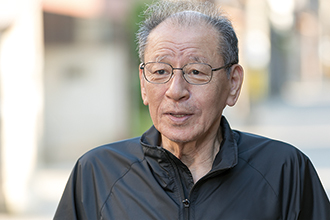niponica is a web magazine that introduces modern Japan to people all over the world.
2019 NO.25
Japan’s Decorative Art of Urushi

Japanese Handicrafts
- Craftsmen Who Create Shikki
Urushi-nuri (lacquering)
Deep knowledge about urushi gives shikki a beautiful luster.
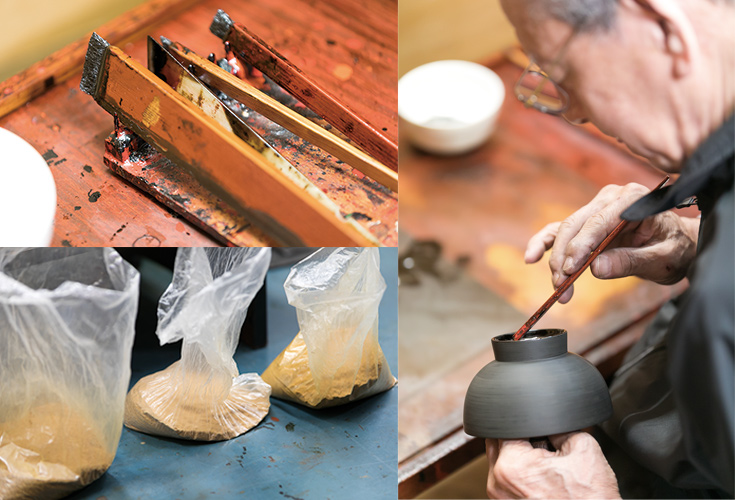
Top: An urushi-hake (lacquering brush) has bristles of human hair from which the oil has been extracted.
Bottom: Diatomaceous earth from Mount Komine is baked and ground into powder to be used as ji-no-ko (ground earth) for Wajima-nuri.
Urushi-nuri - the work of coating shikki - is carried out by craftsmen called nushi (lacquerer). The nature of the coating process varies by production area. In the case of Wajima-nuri, there are as many as 20 steps in the coating process alone.
Wajima-nuri ware is known for being extremely robust. The secret lies in the various reinforcing techniques used. Wajima-nuri makes shikki tougher by reinforcing joints and easily chipped parts.
Wajima-nuri shikki articles are coated with filtered top-quality urushi and are finished using several kinds of brushes. Some go to market as they are; others are decorated.
1.Applying urushi to fragile parts.
This photograph shows kiji-katame (wood base hardening), a process for reinforcing joints and easily chipped parts with urushi.
3.Applying a base coat of urushi mixed with ji-no-ko (ground earth) made of diatomaceous earth from nearby Mount Komine to kiji in order to smooth over the gaps between the edges of the cloth.
4.Leaving the base layer of urushi to dry and then polishing it with a grindstone. Nushi use grindstones of different roughness, according to the base coat of urushi. The process of rubbing on the base coat and polishing is repeated three times, with three granularity levels of powder, from coarse through fine to even finer.
5.Before application, wrapping the urushi in Japanese paper and straining it to achieve a smooth lacquer.
7.As the urushi hardens while absorbing moisture, it is left to dry in a space where humidity and temperature are controlled.






